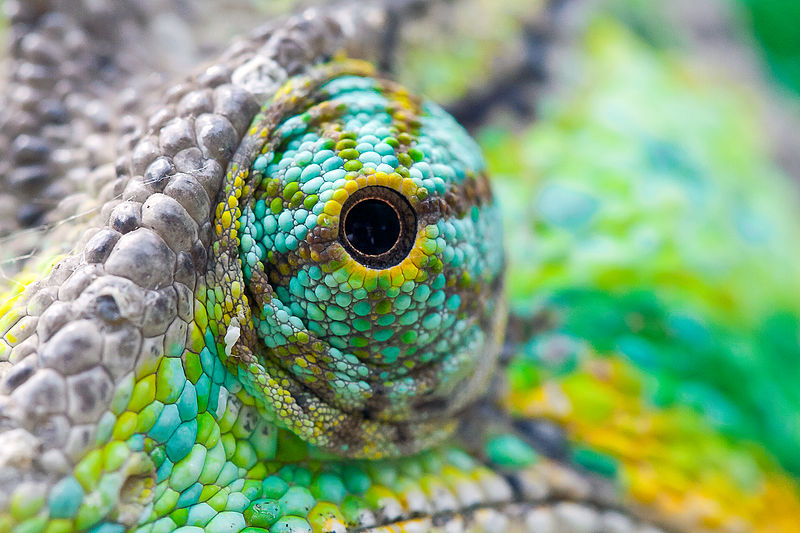Common Chameleon - BIO 203
Form and Function
Feet and Tail
The Common Chameleon has evolved into
the perfect tree inhabitant, with avid adaptations such as their
strong prehensile tail and grasping digits (Keren-Rotem et al.
2006). Chameleons'
feet are uniquely structured by having a separation between their
second and third digits. One group of digits is rotated inwards
while the others are rotated outwards making them perfectly adapted to
grasp round tree branches. The Common Chameleons'
strong prehensile tails helps to provide extra support by wrapping
around the branches shown in the picture below. With these adaptations they are able to
cling onto branches and move freely through the trees. These
adaptations are also helpful when it comes to avoiding predators like
the bamboo pit viper (Trimeresurus
gramineus) by
allowing them to safely rotate around the tree branch to hide
(Lustig et al. 2012).

Eyes
Chameleons have lateralization of their eyes which means that both
eyes do not always move with each other. The Chameleons' eye move in respond
to stimuli, therefor if they sense movement on their left the left
eye would move. Although the eyes appear to be looking in different
directions the chameleon can only see out of the one responding to
the stimuli (Lustig et al. 2012). This
is advantageous for the Chameleon because it allows the Chameleon to identify predators
without having to move anything but one eye.
Camouflage
Chameleons are capable of fast camouflage
called "physiological color change" which is controlled by the
neuroendocrine system stimulating the chromatophores organelle
causing a change of its pigment granules (Stuart-Fox and Moussalli
2009). Camouflage is a vital adaptation for the common chameleon; it
not only protects them from predator but also allows them to sneak
up on their prey (Cuadrado et al. 2008, Keren-Rotem
et al. 2006).
Tongue
Chameleons are also well known for their extremely long tongues
which they use to capture prey such as as insects (Lustig et al.
2012). Chameleons can rapidly project their tongues in under a second
in order to catch their prey, such as flies, like the
Sarcapohaga carnaria, native to the Mediterranean area. This adaptation is extremely
advantageous to the chameleons as they are extremely slow moving
lizards.
Copyright BBC Earth
